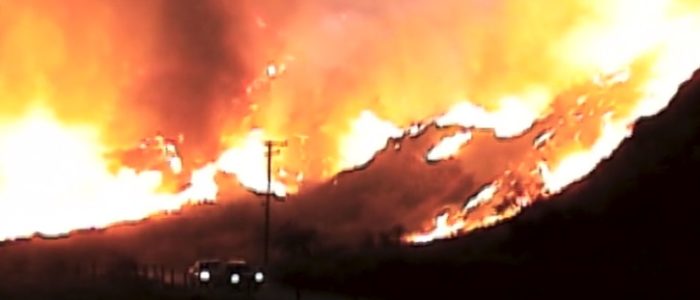Wildfire Home Protection from USAA
In the U.S., wildfires burned 9.7 million acres in 2017 – 49% higher than the average over the last 10 years. This year, we’re off to a burning start with wildfire season beginning earlier than ever. That’s why USAA and Colorado Springs Fire Department (CSFD) have formed an invaluable partnership with non-profit FIREWISE Organization to spread the word about the importance of fuel reductions and fire mitigation for homeowners.
Learn about inexpensive ways to protect your home before a wildfire threat and insurance discounts.
Wildfire Protection Starts in These Places
• Choose Class A roofing materials
• Keep gutters clean and trees trimmed
• Use nonflammable materials for decking
• Opt for double-paned or tempered glass windows
If you live in a wildfire-prone area, it’s essential to stave off potential damage long before flames rage toward your doorstep, experts warn. And one of the best ways to do that is to take a look at the home itself. “It’s a combination of the house materials, the house design and then everything around it within 100 feet that makes the difference between a safer home and one that has a greater risk of damage from wildfire,” says Michele Steinberg, manager of the Wildfire Operations Division for the National Fire Protection Association. “All of our recommendations are really for well before the fire ever starts.”
Pay special attention to these five spots around your house:
The roof. Ensure yours is rated Class A, which means the covering and underlayment provide the most effective resistance to fire. It’s a big-ticket item for homeowners, but the most critical design item when it comes time to replace an aging roof.
The gutters. Keep them free of debris such as leaves and pine needles, which can be ignited by swirling embers. “A wildfire doesn’t even need to be close to your house to cause a problem,” Steinberg says. “A blizzard of embers can pile up on roofs, porches and in gutters.”
The foundation. It’s best that decks, porches and fences be made of non-flammable materials. Keeping their surface areas clear also is critical. Screening porches and decks with fine, metal mesh can help prevent embers from sweeping in to ignite leaves and other debris.
The windows and vents. Double-paned or tempered glass better withstand approaching heat. “I’ve seen cases where the outside window breaks but the inside pane stays intact, so you have that extra level of protection,” Steinberg said. And, if possible, build in under-eave and side-roof vents to make it more difficult for the wind to blow in embers.
The landscaping. Keep organic flammable materials such as trees, shrubbery and even mulch from contact with your house. They can lead fire right to the siding. Store firewood at least 30 feet from the house because of the intense heat and large flames they create when ignited.
For more information visit www.USAA.com/wildfire and www.firewise.org.


